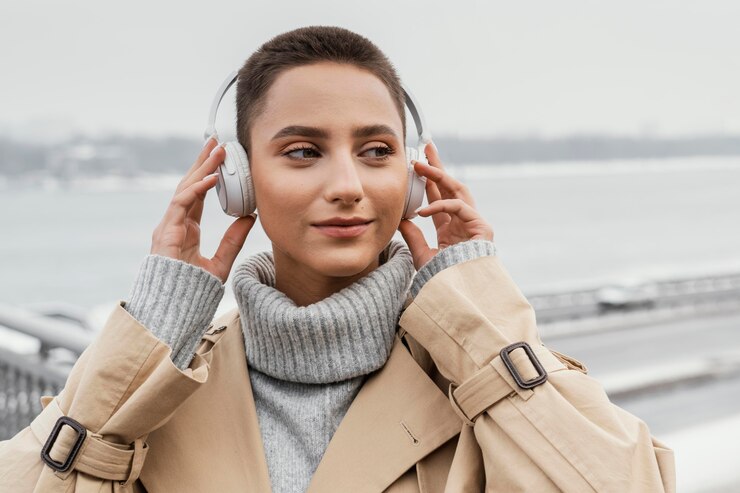
In today’s noisy world, protecting your hearing has become more critical. Whether you work in a loud environment or enjoy attending concerts and events, finding the right hearing protection option is crucial. From noise reduction technology to earplugs, various options are available to safeguard your ears from potential damage. This article will explore different hearing protection options and their effectiveness in reducing noise exposure.
The Importance Of Hearing Protection
Hearing protection is often overlooked, but it plays a vital role in maintaining our well-being. Exposure to excessive noise can cause permanent damage to our hearing, leading to hearing loss and other related issues. The World Health Organization estimates that around 1.1 billion young people are at risk of hearing loss due to recreational noise exposure. This alarming statistic highlights the need for effective hearing protection measures.
The Dangers Of Noise Exposure
Noise exposure can have detrimental effects on our hearing health. Prolonged exposure to loud noises can damage the delicate structures in our ears, including the hair cells responsible for transmitting sound signals to our brain. This damage can result in irreversible hearing loss, tinnitus (ear ringing), and other related symptoms. Understanding the decibel levels at which noise becomes harmful is essential, and taking appropriate measures to protect our ears is necessary.
Understanding Noise Reduction Rating (NRR)
When choosing hearing protection, it’s essential to consider the noise reduction rating (NRR). NRR measures how effectively a hearing protection device can reduce noise levels. The higher the NRR, the more influential the device is at blocking noise. It’s important to note that NRR is not the only factor to consider, as the fit and proper usage of the device also impact its effectiveness. Understanding the NRR can help you decide when selecting hearing protection.
Different Types Of Hearing Protection Options
There are various types of hearing protection options available, each with its advantages and disadvantages. Let’s explore some of the most common options:
Disposable Foam Earplugs
Disposable foam earplugs are a popular and affordable option for hearing protection. These earplugs are made of soft foam that expands to fit the shape of your ear canal, creating a tight seal that blocks out noise. They are lightweight, portable, and easy to use. However, disposable foam earplugs may not provide a perfect fit for everyone and may not be suitable for long-term use due to hygiene reasons.
Custom-Molded Earplugs
Custom-molded earplugs are an excellent option for a more personalized and comfortable fit. These earplugs are made from a mold of your ear, ensuring a perfect fit and maximum noise reduction. Custom-molded earplugs are typically more expensive than disposable foam earplugs, but they offer superior comfort and effectiveness. They are ideal for individuals who require long-term hearing protection, such as musicians and industrial workers.
Earmuffs And Noise-Canceling Headphones
Earmuffs and noise-canceling headphones provide an alternative approach to hearing protection. Earmuffs are designed to cover your entire ear and create a seal that blocks out noise. They effectively reduce noise levels but can be bulky and may only be suitable for some situations. On the other hand, noise-canceling headphones use advanced technology to cancel out external sounds and provide a more peaceful listening experience. They are popular among music enthusiasts and frequent travelers.
Choosing The Right Hearing Protection For Different Situations
Selecting the ideal hearing protection depends on the particular situation and personal preferences. Custom-molded earplugs or earmuffs are often the most effective choice for those working in noisy industrial environments. If you’re heading to a concert or loud event, disposable foam earplugs or noise-canceling headphones can offer suitable protection. When deciding on the appropriate hearing protection, consider factors such as comfort, effectiveness in noise reduction, ease of use, and compatibility with your device for those with hearing aids. The right protection can preserve your hearing and enhance your overall experience in noisy environments.
How To Properly Use And Maintain Hearing Protection
Proper usage and maintenance of hearing protection are crucial for their effectiveness. Follow these tips to ensure you get the most out of your hearing protection:
- Read and follow the manufacturer’s instructions for adequately inserting and removing earplugs or earmuffs.
- Regularly clean reusable earplugs and earmuffs to prevent dirt and bacteria buildup.
- Replace disposable earplugs according to the manufacturer’s recommendations.
- Store hearing protection devices in a clean, dry place to maintain integrity.
- Regularly inspect your hearing protection for any signs of wear and tear and replace them if necessary.
Conclusion: Taking Proactive Steps To Protect Your Hearing
In conclusion, protecting your hearing is essential in today’s noisy world. Whether you opt for noise-reduction technology, earplugs, earmuffs, or headphones, finding the right hearing protection option can significantly reduce your risk of hearing loss and related issues. Understanding the dangers of noise exposure, the importance of NRR, and the different hearing protection options available will help you make an informed decision. Remember to choose the proper hearing protection for various situations, properly use and maintain them, and take proactive steps to safeguard your hearing for years.